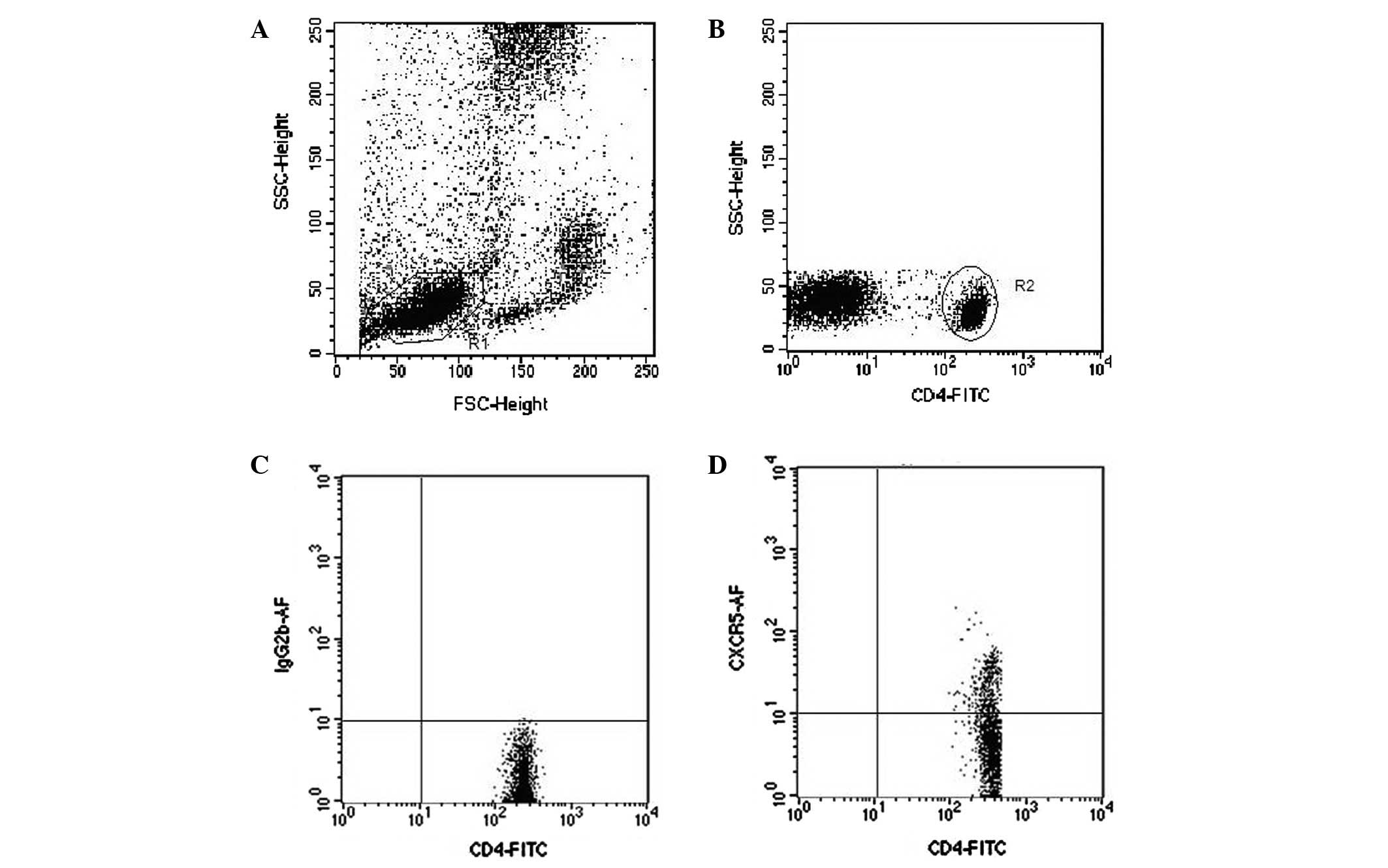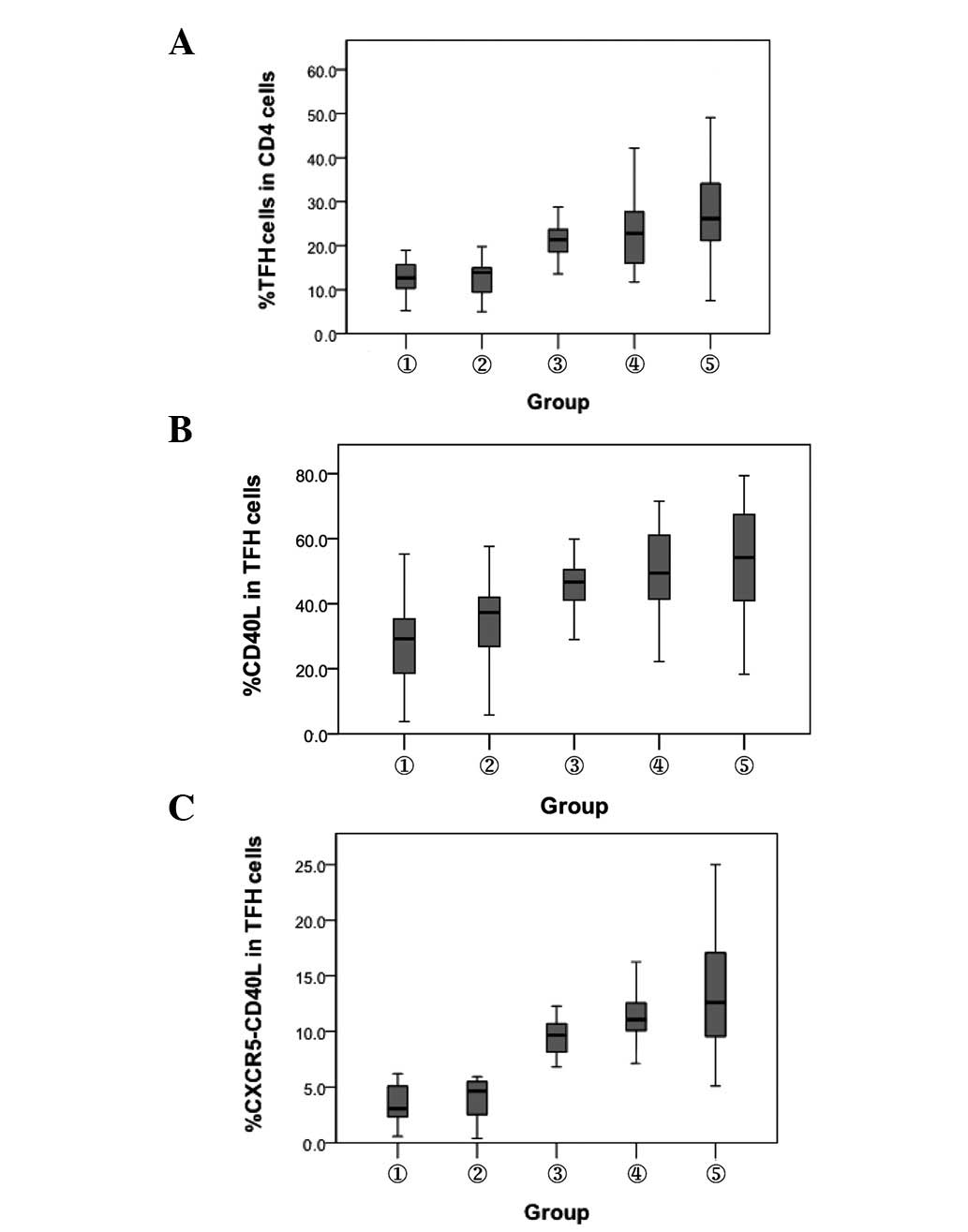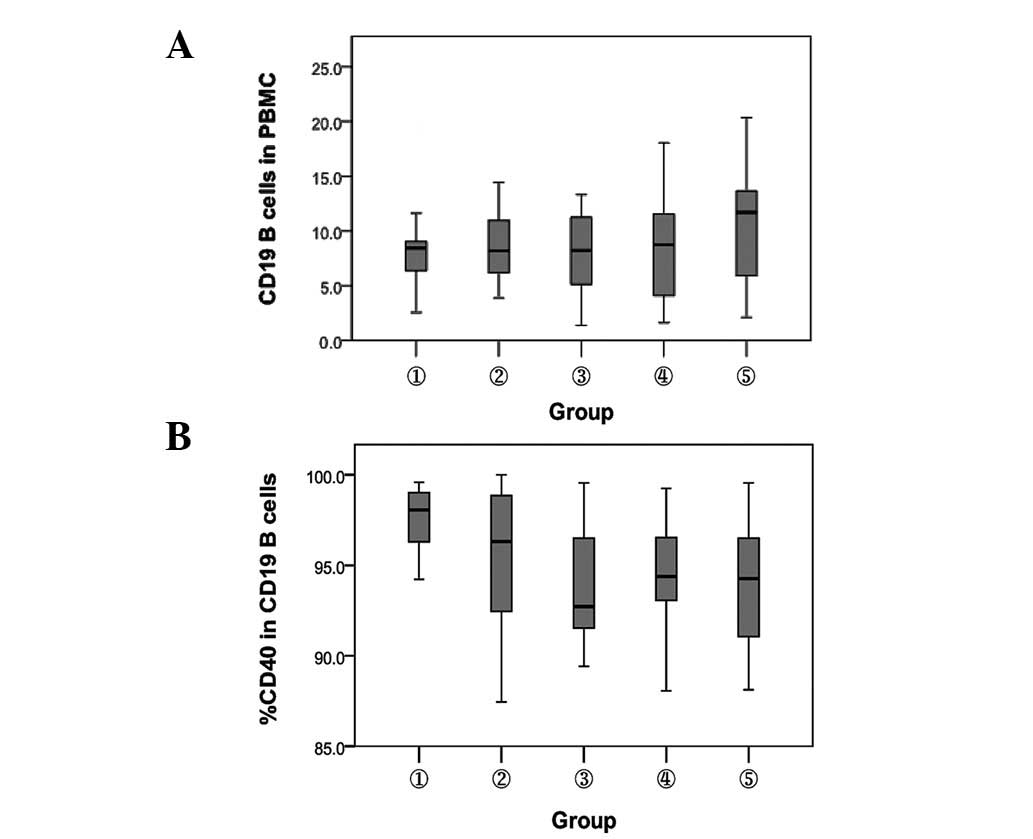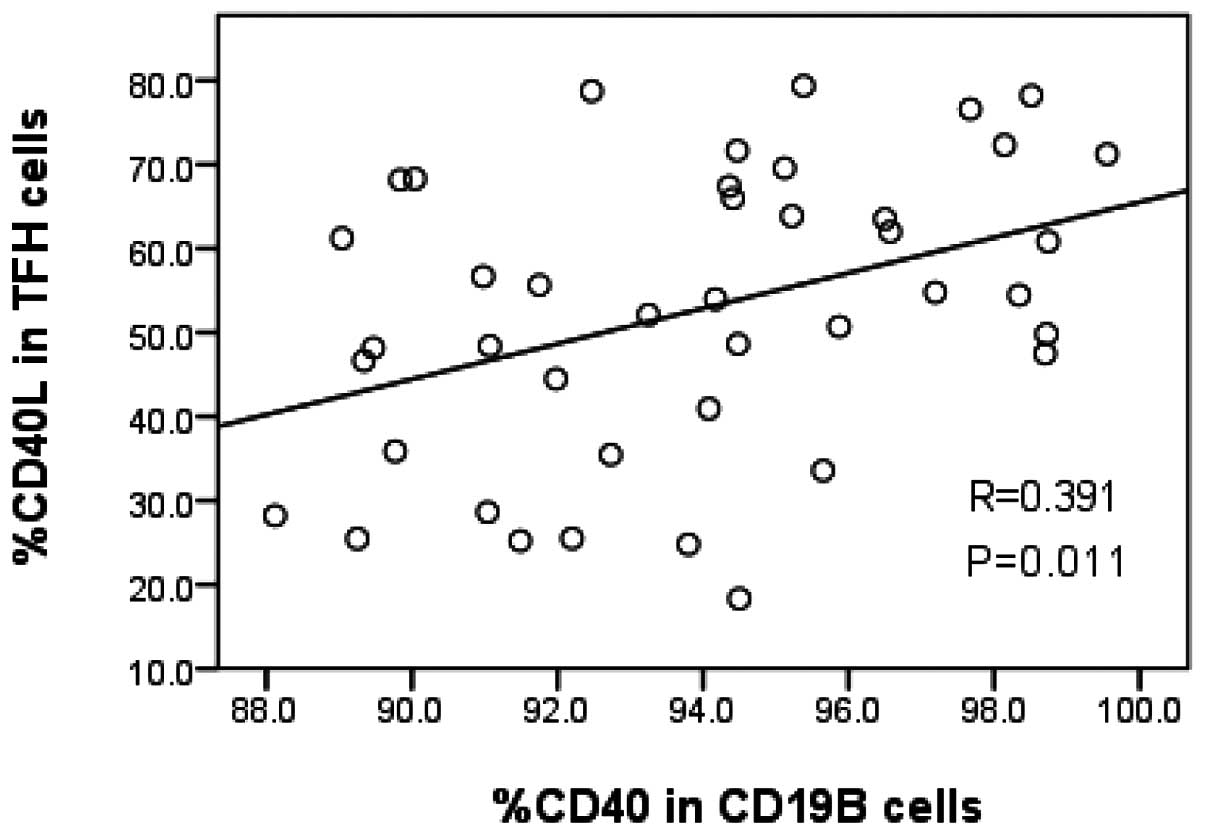Role of T follicular helper cells and their associated molecules in the pathogenesis of chronic hepatitis B virus infection
- Authors:
- Published online on: December 19, 2012 https://doi.org/10.3892/etm.2012.864
- Pages: 885-889
Metrics:
Total
Views: 0 (Spandidos Publications: | PMC Statistics:
)
Total PDF Downloads: 0 (Spandidos Publications: | PMC Statistics:
)
Abstract
In this study, we investigated the roles of T follicular helper (TFH) cells and related molecules in the pathogenesis of chronic hepatitis B virus (HBV) infection. The levels of circulating TFH cells and their surface CD40 ligand (CD40L), as well as CD19+ B cells and their surface CD40 expression were detected by flow cytometry. Peripheral blood plasma interleukin (IL)-21 levels were detected by enzyme-linked immunosorbent assay (ELISA). Compared with hepatitis B surface antibody (HBsAb)- and HBsAb+ healthy controls, the percentage of TFH cells and their surface CD40L expression significantly increased in patients with chronic HBV infection, particularly those with chronic hepatitis B (P<0.05). The percentage of CD19+ B cells significantly increased in chronic hepatitis B patients and CD40 expression levels on the CD19+ B cell surface in chronic HBV infection decreased compared with those in the healthy controls (P<0.05). Compared with the healthy controls, the plasma IL-21 level in chronic hepatitis B patients was significantly increased in chronic HBV carriers and decreased in inactive hepatitis B surface antigen (HBsAg) carriers (P<0.05). The TFH cell percentage, B cell percentage and IL-21 expression did not significantly differ between the hepatitis B e-antigen (HBeAg)- and HBeAg+ chronic hepatitis B groups (P>0.05). The abnormal expression of TFH cells and IL-21 is related to the dysfunction of immune response during chronic HBV infection. The interaction of CD19+ B cells with TFH cells via their CD40 and CD40L molecules may also play an important role in this process.















